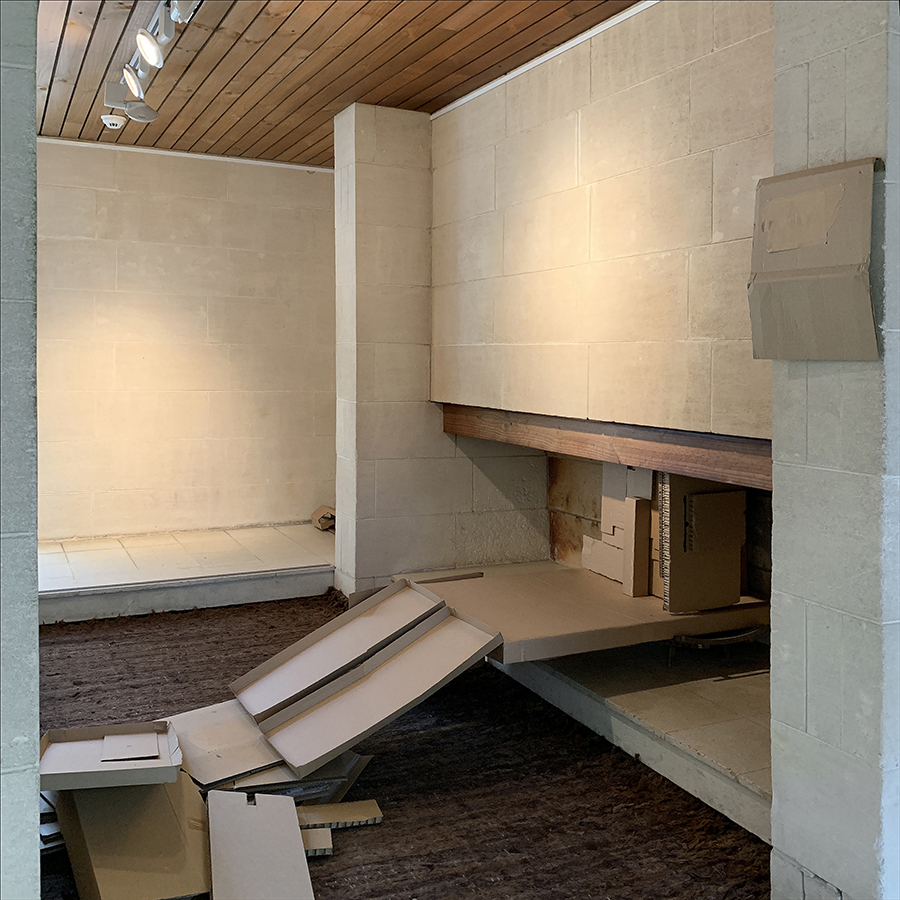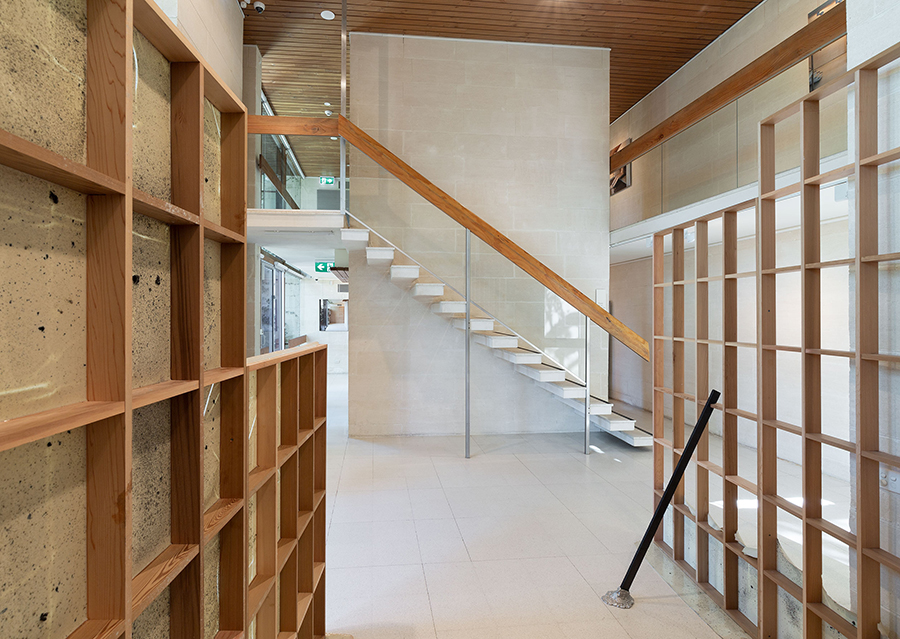Carolyn Eskdale’s Temporary Architectures
The artist’s cardboard interventions remind us that the modernist Heide Museum, Melbourne, was once a home – where people lived and touched
The artist’s cardboard interventions remind us that the modernist Heide Museum, Melbourne, was once a home – where people lived and touched

A sweep of splayed cardboard boxes inter-link across a small domestic room. Beginning as a stack in an open fireplace – like a crammed bookshelf – they cantilever across the hearth’s edge, tilting down into a pile of deconstructed boxes below. Standing in the room in which it occurred, I see this cardboard intervention not as a material presence, but in a colour photograph. Titled Heide II Conversation Pit Memory Procedure (2019), it is one of a series that acts as witness to a range of performative actions undertaken by Carolyn Eskdale within Heide II’s architectural interior.
Heide II is a sleek Australian modernist home, designed by the architectural firm McGlashan and Everist for the art patrons John and Sunday Reed as ‘a gallery to be lived in’. The Reeds lived there from 1967 to 1980 before bequeathing the building to the State Government; it re-opened as a public museum of modern art in 1981. Described by a contemporaneous architect as ‘International Style set down amongst the melaleucas,’ the house has the openness of a museum built into its very structure, with its bold interiors, double height ceilings and expanses of exposed limestone wall designed for hanging artworks.

Gaining access to the museum on the weekly day it was closed, Eskdale visited the building over a period of six months, ‘inhabiting the space’ as she put it, in order to develop a series of site-specific interventions that culminated in the exhibition ‘Memory Horizon’. Sometimes Eskdale would simply walk through the space, observing and thinking while moulding wax in her hands. Other times she assembled strategically placed, aggregate cardboard structures that she would carefully photograph before disassembling.
The lengthy time the artist lingered in the former home reveals itself in the considered ways in which her works echo elements of the existing building and surrounds. A timber modular structure placed in the former living room (now a downstairs gallery) makes a formal analogue with the adjacent two-storey floor-to-ceiling windows, bringing their axial lines into relief. Its gridded structure also draws a parallel with the floor and wall’s limestone brickwork. A rod leans lightly against the timber grid as a flipped counterpoint to the angled balustrade of the nearby staircase. The residue of manifold acts of pressing fingers into soft wax is visible in a row of cast aluminium panels whose textured surfaces resemble a patch of soil from the garden outside.

The works collectively materialize a sense of push and pull – between exterior and interior spaces, rectilinear and organic forms, bodily actions and architectural environment – in an ongoing exchange of suppleness and resistance. The photographs and hand-pressed or assembled structures exist as memory forms of the gestures and physical processes that produced them. But they also dilate the architectural frame they inhabit, not just as structural and material correspondences, but as temporal reverberations. The objects themselves seem like propositional structures with no fixed end – much like a horizon is a marker for an infinitely receding point.
In a letter written in 1967 John Reed wrote ‘We are slowly getting to grips with Heide II. It is so beautiful but we have to start again as it were and learn how to live in it.’ Eskdale shows us how this might be done.
























